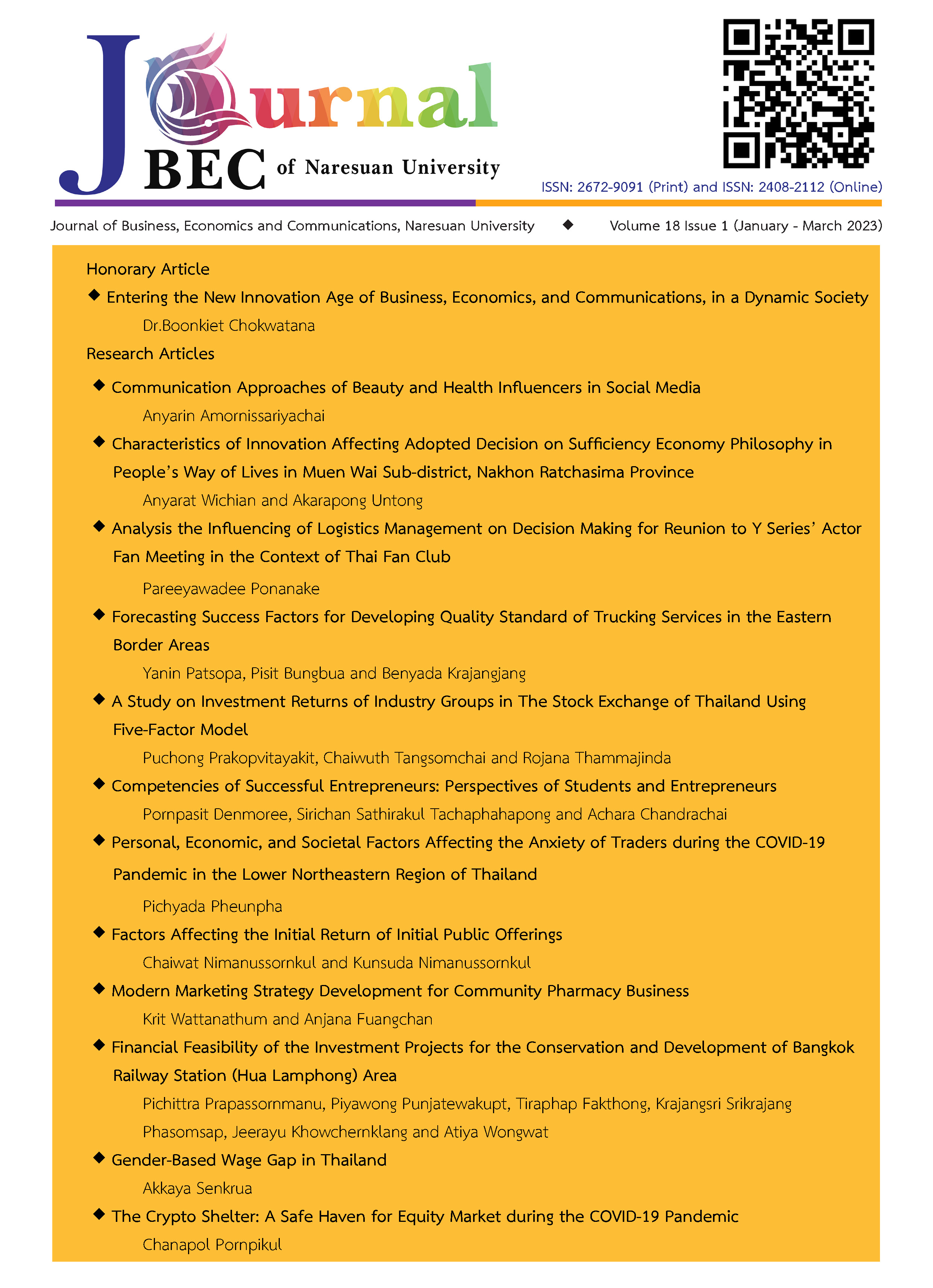Factors Affecting the Initial Return of Initial Public Offerings
Main Article Content
บทคัดย่อ
ratio, that affect the first-day initial return of an initial public offering. The minimum Bayes factor, which had never been used in previous studies, was employed to test the hypothesis instead of P-Value. The analysis was based on a sample of IPOs and related data in the period of March 23rd, 2016 to February 11th, 2021.
The results show that the initial return value of Initial Public Offerings (IPOs) was between -25 and 200 percent. The positive initial return was traded in the bull market and had a better financial ratio than the negative initial return. As for the factors ranging from the most to the least strength of evidence against the null hypothesis, investors and persons involved in IPOs should focus on the following factors: a 3-month market return, the return of equity, the price to book value per share ratio, the market capitalization, exchange, the debt to equity ratio, a 1-week market return, the price to earnings per share ratio, a greenshoe option, and the market return.
Article Details

อนุญาตภายใต้เงื่อนไข Creative Commons Attribution-NonCommercial-NoDerivatives 4.0 International License.
เอกสารอ้างอิง
Akyol, A. C., Cooper, T., Meoli, M., and Vismara, S. (2014). Do regulatory changes affect the underpricing of European IPOs?. Journal of Banking and Finance, 45(August), 43-58.
Banerjee, S., Dai, L., and Shrestha, K. (2011). Cross-country IPOs: What explains differences in underpricing?. Journal of Corporate Finance, 17(5), 1289-1305.
Bonaventura, M., Giudici, G., and Vismara, S. (2018). Valuation and performance of reallocated IPO shares. Journal of International Financial Markets, Institutions and Money, 54(May), 15-26.
Chan, K., Wang, J., and Wei, K. C. J. (2004). Underpricing and long-term performance of IPOs in China. Journal of Corporate Finance, 10(3), 409-430.
Chirawatkul, A. (2016). Incorrect Interpretation of p-value. Journal of Health Science, 25(3), 353-354.
Chourou, L., Saadi, S., and Zhu, H. (2018). How does national culture influence IPO underpricing?. Pacific-Basin Finance Journal, 51(October), 318-341.
Gao, S., Meng, Q. and Chan, K. C. (2016). IPO pricing: Do institutional and retail investor sentiments differ?. Economics Letters, 148(November), 115-117.
Goodman, S. N. (1999). Toward evidence-based medical statistics. 2: the Bayes factor. Annals of Internal Medicine, 130(12), 1005–1013.
Grammenos, C. Th. and Papapostolou, N. C. (2012). US shipping initial public offerings: Do prospectus and market information matter?. Transportation Research Part E, 48(January), 276-295.
Heerden, G. V. and Alagidede, P. (2012). Short run underpricing of initial public offerings (IPOs) in the Johannesburg Stock Exchange (JSE). Review of Development Finance, 2(3-4), 130-138.
Held, L. and Ott, M. (2016). How the maximal evidence of p-values against point null hypotheses depends on sample size. The American Statistician, 70(4), 335–341.
International Monetary Fund. (2021). World economic outlook update January 2021. Retrieved March 31, 2021, from https://www.imf.org/-/media/Files/Publications/ WEO/2021/Update/January/English/text.ashx
Keawsang, S. (2016). Factors Influencing on return on initial public offerings of Stock Exchange of Thailand. Independent Study, M.S.(Finance)., Bangkok University, Bangkok.
Killins, R. N. (2019). An investigation of the short-term performance of the Canadian IPO market. Research in International Business and Finance, 47(January), 102-113.
Kunnitikorn, R. (2019). Factors affecting the initial public offering (IPO) return at the First trading day on The Stock Exchange of Thailand. Independent Study, M.Econ., Chiang Mai University, Chiang Mai.


